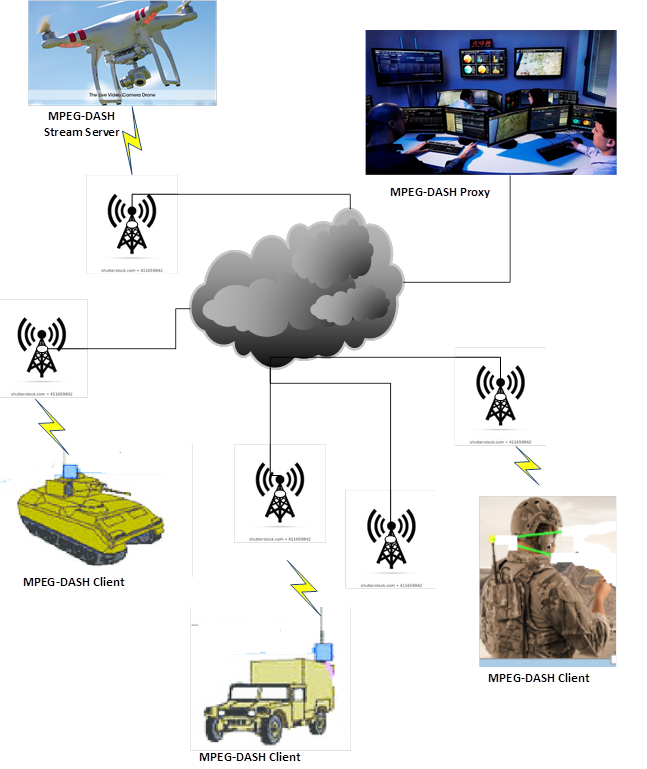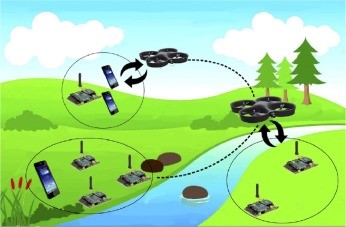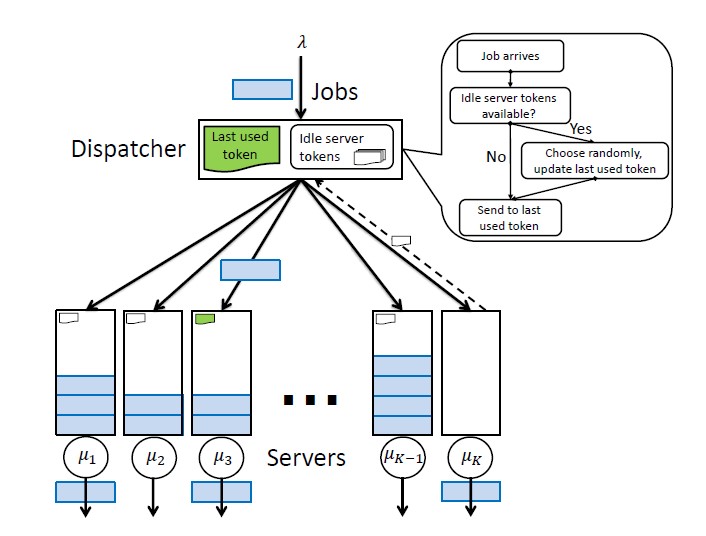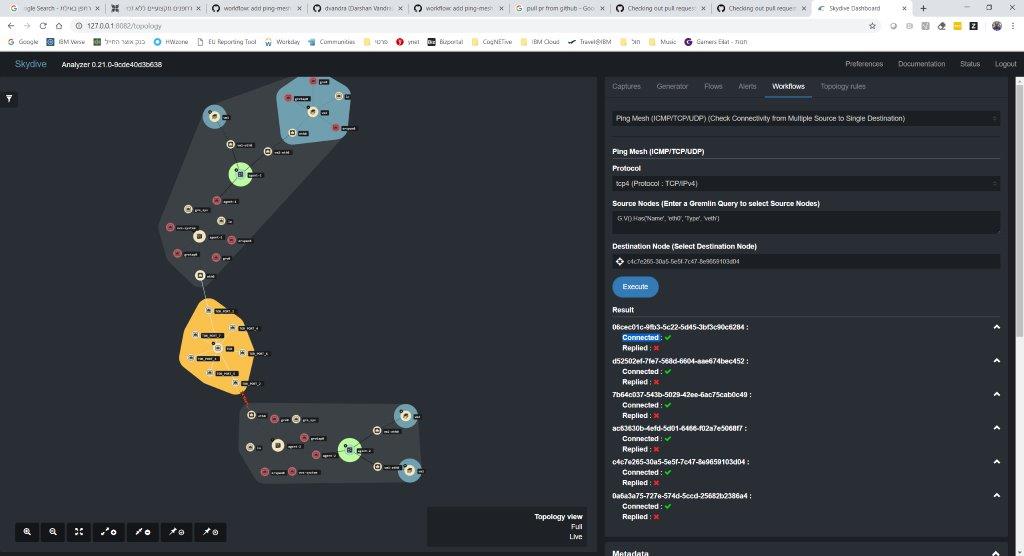2019
Project Title:
LoRaWAN Relay
Supervisors:
Aviel Glam (Rafael), Itzik Ashkenazi
Description:
Low-power WAN (LPWAN) is a wireless wide area network specification that interconnects low-bandwidth, battery-powered sensors with low bit rates over long ranges.
To meet the challenges of long range, low power consumption and secure data transmission, the sensors are based on LoRa Technology and on LoRaWAN media access control (MAC) layer protocol that manages communication between LPWAN sensors and the Gateway.
Not in all circumstances its possible for an end node sensor to communicate with the outside world. This requires use of mobile relay that will intermediate the LoRa connection between the sensor and the Gateway. The challenge in the LoRaWAN Relay is to be able to switch between LoRa frequencies of the sensor’s domain working in Class A and the LoRa frequency towards the Gateway.

Project Title:
MPEG-DASH Proxy Live Streaming
Supervisors:
Aviel Glam (Rafael), Itzik Ashkenazi
Description:
MPEG-DASH (Moving Picture Experts Group - Dynamic Adaptive Streaming over HTTP) is a vendor independent, international standard ratified in 2012. One of the main benefits of MPEG-DASH is reduction of startup delays and buffering/stalls during the video and continued adaptation to the bandwidth situation of the client.
Today, MPEG-DASH is gaining more and more deployments, accelerated by services such as Netflix or Google, which recently switched to this new standard. With these two major sources of internet traffic, 50% of total internet traffic is already MPEG-DASH.
The basic idea of MPEG-DASH is as follows: chop the media file into different bit-rates or spatial resolutions encoded segments. The segments are provided on a Web server and can be downloaded through HTTP standard compliant GET requests where the HTTP Server serves different qualities, chopped into segments of equal length. Since the client knows its capabilities, received throughput and the context of the user best - the adaptation to the best bit-rate or resolution is done on the client side for each segment.
In certain cases, there is a need for multiple clients to receive the same video stream. Since the client’s bandwidth and connection quality can vary, the challenge is to stream to each client the best possible quality, using MPEG-DASH Proxy, while maintaining live streaming.

Project Title:
MPEG-DASH Live streaming in unstable environment
Supervisors:
Aviel Glam (Rafael), Itzik Ashkenazi
Description:
MPEG-DASH (Moving Picture Experts Group - Dynamic Adaptive Streaming over HTTP) is a vendor independent, international standard ratified in 2012. One of the main benefits of MPEG-DASH is reduction of startup delays and buffering/stalls during the video and continued adaptation to the bandwidth situation of the client.
Today, MPEG-DASH is gaining more and more deployments, accelerated by services such as Netflix or Google, which recently switched to this new standard. With these two major sources of internet traffic, 50% of total internet traffic is already MPEG-DASH.
The basic idea of MPEG-DASH is as follows: chop the media file into different bit-rates or spatial resolutions encoded segments. The segments are provided on a Web server and can be downloaded through HTTP standard compliant GET requests where the HTTP Server serves different qualities, chopped into segments of equal length. Since the client knows its capabilities, received throughput and the context of the user best - the adaptation to the best bit-rate or resolution is done on the client side for each segment.
In previous semester, we managed to achieve MPEG-DASH live streaming (sub 1 second delay) in stable environment where the bandwidth is not changing. In this project we assume the client’s bandwidth and connection quality can vary. The challenge is to stream to such client the best possible quality, while maintaining live streaming.

Project Title:
Enhanced Telemtry on Mellanox Switch Programmed by P4
Supervisors:
Matty Kadosh & Alan Lo (Mellanox)
Description:
Programming Protocol-independent Packet Processor (P4) is a high-level language that can be deployed in the future into Software Defined Networks (SDN) and can actually serve as an alternative to OpenFlow that is currently used – due to its flexibility and ability program the data plane and support emerging new protocols.
Network monitoring plays a significant role in network management. It is used for a variety of applications such as QOS, billing, traffic engineering, security and anomaly detection. While some of these applications require only flow statistics, many require more specific packet-level information as well as networking hardware resource operational status. The new Mellanox SN3700 P4-capable Spectrum-2 based, supports the ability to perform mirror of sampled traffic, encapsulate it to GRE and add to it additional telemetry meta data like: Switch ID, time stamp, ingress/egress queues occupancy and congestion status, egress port link utilization and more . Unlike similar techniques like In-band Network Telemetry (INT) and in-situ Operation Administration and Maintenance (OAM), the Postcard-Based Telemetry (PBT) does not require inserting telemetry data into sampled user packets, but directly exports the telemetry data to a collector through separated OAM packets called postcards.

Project Title:
Cooperative Rule Caching in SDN Switches
Supervisors:
Prof' Ori Rottenstreich
Description:
Classification is a building block in many network services such as monitoring and policy enforcement. In commodity switches, classification is performed by rule tables of various matching patterns (exact match, longest prefix match or ternary match). The memory components are fast and power-hungry, but at the same time are of limited size. To deal with the memory limits, rule caching approach is implemented in traditional switches, where it is performed independently in each of them.
A new approach is taking advantage of the similarity between the policies expressed in the various network switches through cooperative rule caching. Cooperative caching improves the performance of a distributed caching system by coordinating the cache policies among clients.
In addition, the centralized control of SDNs naturally motivates cooperative caching. By allowing packets to be forwarded to other switches to complete the classification process within the data plane, the load on the control plane and the time to resolve requests are reduced.

Project Title:
Smart Mobile LoRaWAN Gateway
Supervisors:
Aviel Glam (Rafael)
Description:
Low-power WAN (LPWAN) is a wireless wide area network specification that interconnects low-bandwidth, battery-powered sensors with low bit rates over long ranges.
To meet the challenges of long range, low power consumption and secure data transmission, the sensors are based on LoRa Technology and on LoRaWAN media access control (MAC) layer protocol that manages communication between LPWAN sensors and the Gateway.
Not in all circumstances its possible for an end node sensor to communicate with the outside world. This requires to use mobile gateway utilized on drone. The drone on its flight path can reach the remote location where the sensor device is running and collect its data. The challenge in this solution is to establish a communication link with every sensor node, by being at the correct location at the right sensor duty cycle time.

Project Title:
Persistent-Idle (PI) Kubernetes Load Balancing
Supervisors:
Dr. Jose Yallouz (Mellanox)
Description:
Kubernetes (commonly stylized as K8s),is a new and fast-evolving Open source project, originally created by Google. It is a popular coin tanker orchestration system for automating deployment, scaling and management of containers. An important component of Kubernetes is its Load Balancer (LB). It provides a way to distribute load across Pods belonging to a service. When a client connects, the LB chooses a Pod, connects to it and forwards it the stream.
A new innovative LB policy called Persistent-Idle (PI) LB is proposed for heterogeneous environment. It is based on Join-the-Idle-Queue (JIQ) algorithm where the dispatcher knows which servers are idle. PI suggests an improvement to JIQ that will outperform in such an environment.

Project Title:
Sampling-on-Demand Postcard on Mellanox Switch Programmed by P4
Students:
ספיר בירנבאום ,ליליאן כהן
Supervisors:
Matty Kadosh (Mellanox)
Description:
Network monitoring plays a significant role in network management. It is used for a variety of applications such as QOS, billing, traffic engineering, security and anomaly detection. While some of these applications require only flow statistics, many require more specific packet-level information. Any P4 capable switch must support ability to perform mirror of sampled traffic, encapsulate it to GRE and add to it additional telemetry meta data like: Switch ID, time stamp and more. Unlike similar techniques like In-band Network Telemetry (INT) and in-situ Operation Administration and Maintenance (OAM), the Postcard-Based Telemetry (PBT) does not require inserting telemetry data into sampled user packets, but directly exports the telemetry data to a collector through separated OAM packets called postcards.
The challenge here is to be able to synchronize switches along the flow path to sample on the specific sample packets.

Project Title:
Skydive Noisy-Neighbor Detection
Students:
עידן ענר, גלעד לוי
Supervisors:
Dr. Anna Levin (IBM) , Eran Raichstein (IBM)
Description:
The main enabling technology for cloud computing is virtualization. Virtualization software separates a physical resource into one or more "virtual" resources, each of which can be easily used and managed to perform computing tasks. Cloud network is one such resource and is virtualized through multiple logical constructs and SW layers. It is essential to monitor cloud network to ensure transparency, correct and efficient operations, both from the customer and from the provider perspectives. Skydive is an open source real-time network topology and protocols analyzer. It aims to provide a comprehensive way of understanding what is happening in the network infrastructure.

Project Title:
Multiple Media streams synchronization using MPEG-DASH
Students:
שלומי עובדיה ,אלכס חבוליס ,Dmitriy Laguoto ,אדהם סיף
Supervisors:
Boaz Sternfeld, Yaron Honen, Itzik Ashkenazi
Description:
MPEG-DASH (Moving Picture Experts Group - Dynamic Adaptive Streaming over HTTP) is a vendor independent, international standard ratified in 2012. One of the main benefits of MPEG-DASH is reduction of startup delays and buffering/stalls during the video and continued adaptation to the bandwidth situation of the client.
Today, MPEG-DASH is gaining more and more deployments, accelerated by services such as Netflix or Google, which recently switched to this new standard. With these two major sources of internet traffic, 50% of total internet traffic is already MPEG-DASH.
One of the challenges today in the 3D real-time videos and Virtual Reality (VR) is for example to be able to create and manipulate virtual replicas of physical objects in the local environment (Remote collaboration in VR using virtual replicas) VR presents a way for people to truly interact with places far away like surgeon perform surgery from home or an engineer participating in a physical meeting abroad.

Project Title:
Heavy-Hitter Detection on SmartNIC - using P4
Students:
שסטקובה מריה,ליובצ'יק יבגני
Supervisors:
Itzik Ashkenazi, Prof. Ori Rotenstriech
Description:
Many network management applications can benefit from finding the set of flows contributing significant amounts of traffic to a link. Such flows are called “Heavy Hitters”. Monitoring heavy hitters is required for example, to relieve link congestion or to detect network anomalies and attacks. Furthermore, heavy-hitters identification is done in small time scales, it can enable dynamic routing of the heavy flows and also dynamic flow scheduling.
In order to respond quickly to short-term traffic variations, it is desirable to run heavy-hitter monitoring at all switches and (Network Interface Card) NICs in the network all the time. It should identify packets belonging to heavy–hitter flows in a reasonable accuracy and by meeting hardware constrains such as limited number of accesses to memory storing state and a limited amount of memory available.

Project Title:
איסוף מידע מסנסורים על ידי רחפן
Students:
איליה פריידקין ,מקס קולצ'ינסקיי
Supervisors:
(אביאל גלאם (חברת רפאל
Description:
שימוש בסנסורים קטנים ויעילים מתרחב ותופס תאוצה בעולם הפרטי והתעשייתי וזאת כחלק ממגמת Internet of Things) oT).
הסנסורים מתאפיינים במזעורם, יעילותם, פיזורם המרחבי והיכולת שלהם לעבוד למשך זמן רב.
במקביל, הגישה המסורתית לאיסוף המידע מסנסורים אלו עלולה להיות מוגבלת, יקרה או בסביבה קשה. לדוגמה, גלאי תנועה במבנה שנפגע מרעידת אדמה, גלאי טמפרטורה למניעת דליקות חורש ועוד.
לכן, נרצה להשתמש בפתרון יתיר (זול מספיק כדי שניתן יהיה להחליפו בקלות).
כדי להתמודד עם הבעיות שהוצגו, מוצע הפתרון הבא:
שימוש ברחפן שינוע בשטח בו פזורים הסנסורים ויפעילם מרחוק לטובת איסוף המידע.



